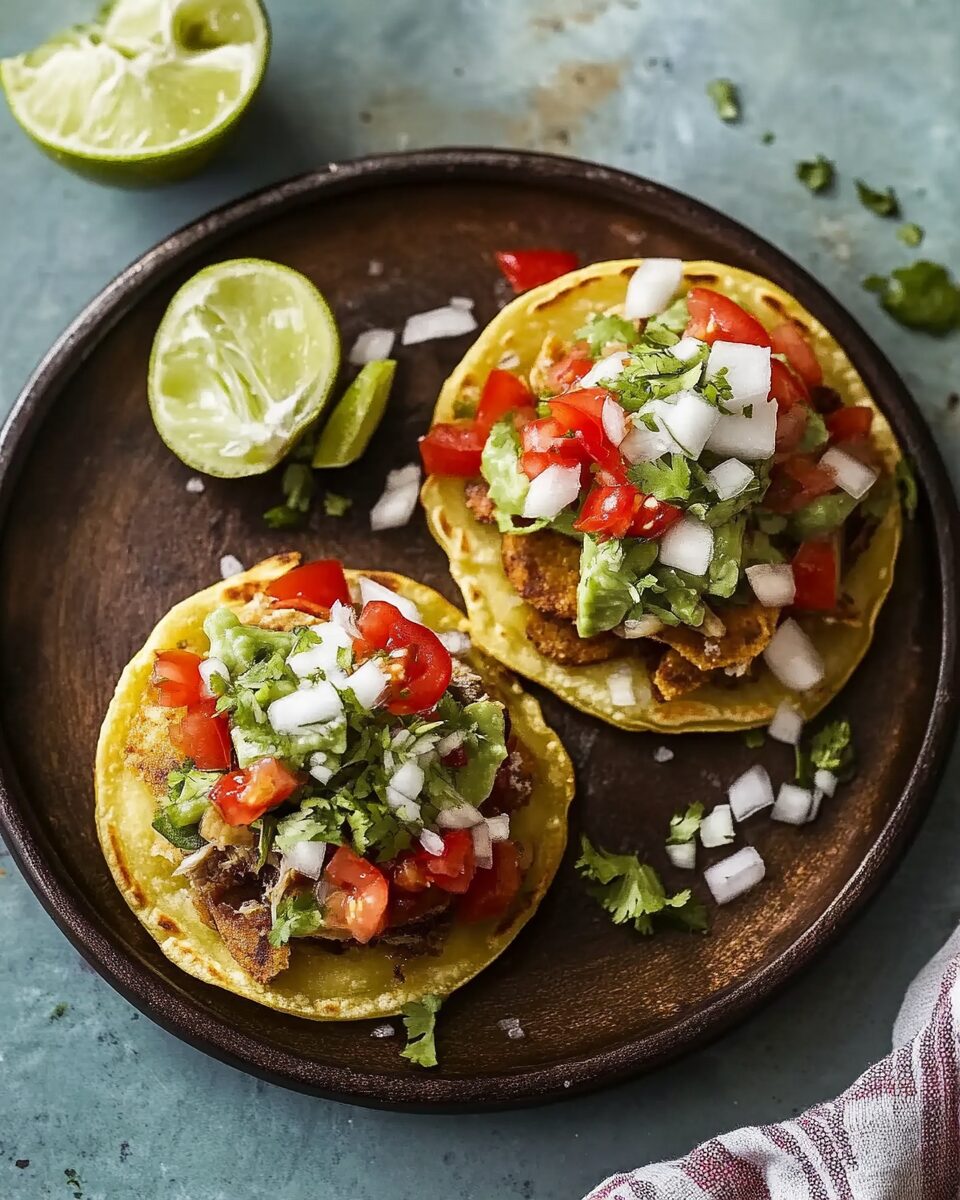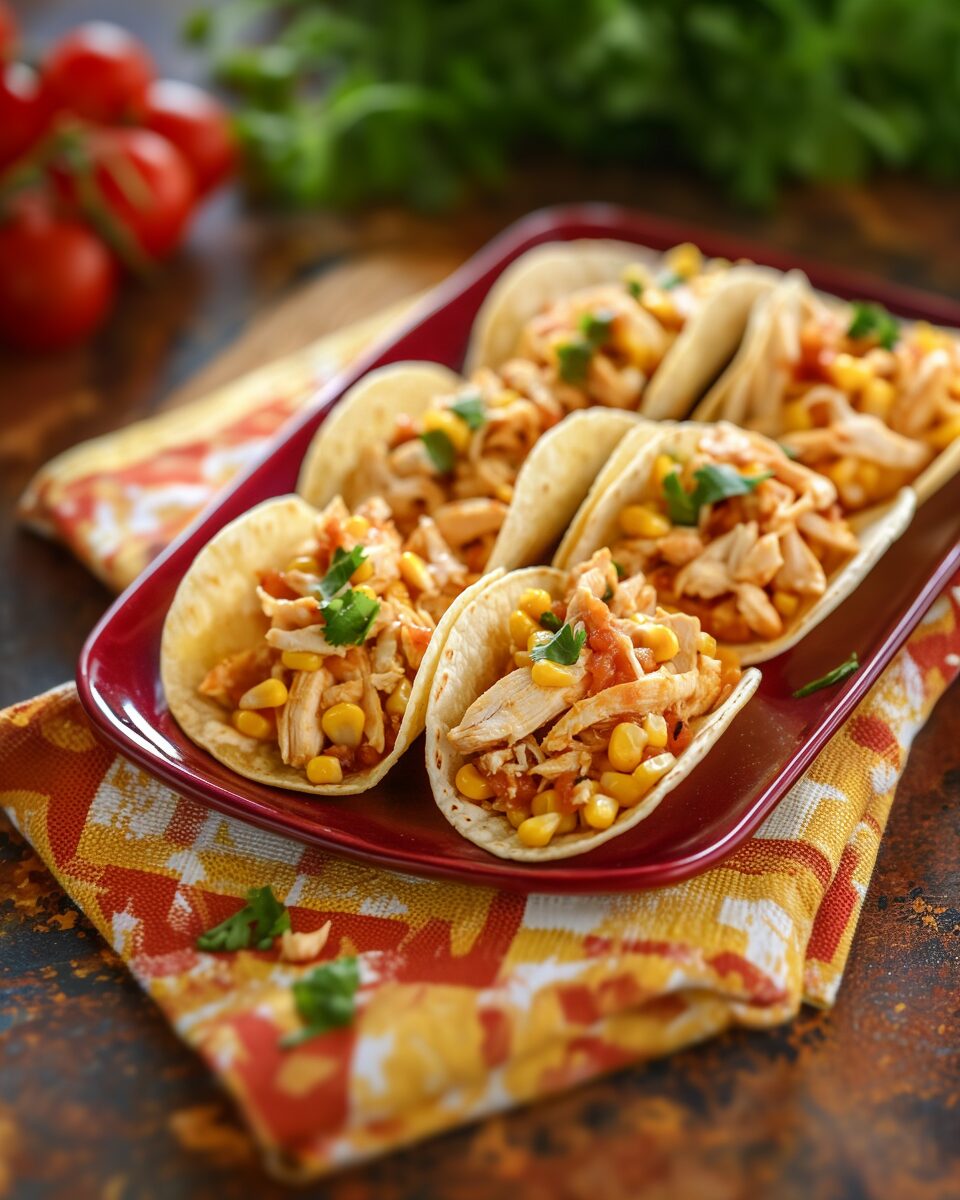Duck tamales are a traditional Mexican dish that offers a rich and flavorful experience. This recipe, inspired by the Purépecha people of Tzintzuntzan, Michoacán, combines tender duck meat with a savory red sauce, all encased in a soft masa dough and steamed to perfection.
Full Recipe:
Ingredients
For the Duck:
- 6.5 lbs whole duck
- Salt, generously
- Ground black pepper, generously
- 2 tablespoons avocado oil
- 10 cups water
- 1 white onion, halved
- 1 head of garlic, top sliced off
- 3 bay leaves
- 1 teaspoon whole allspice
- Small bunches of fresh mint, thyme, oregano, and cilantro
For the Red Sauce:
- 8 guajillo chiles
- 8 puya chiles
- 1 large ancho chile
- 2 tablespoons avocado oil
- ½ white onion, roughly diced
- 6 garlic cloves, smashed and peeled
- 1 teaspoon dried Mexican oregano
- ½ teaspoon whole cumin
- ½ teaspoon whole allspice
- 3½ to 4 cups hot duck broth
- Salt to taste (approximately 1 teaspoon kosher salt)
For Wrapping:
- 40 corn husks
For the Masa Dough:
- 6 cups instant corn masa harina
- 1 tablespoon baking powder
- 2½ teaspoons kosher salt
- ¾ cup duck fat
- ¾ cup avocado oil
- 1 cup red sauce (reserved from above)
- 3 to 4 cups warm duck broth
Directions
- Prepare the Duck:
- Remove the neck and giblets from the duck’s cavity, reserving the neck. Pat the duck dry with paper towels and remove excess skin from the neck area.
- Break down the duck by removing the breast meat, wings, and leg-thigh portions. Cut off the tail and wing tips, reserving any excess skin.
- Break down the carcass into smaller pieces and place them, along with the neck and wing tips, on a sheet pan with a rack. Drizzle with avocado oil and season with salt and pepper. Roast in a preheated oven at 425ºF (218ºC) for 30 to 45 minutes, until browned.
- Cook the Duck:
- Season the duck breasts, thighs, legs, and wings generously with salt and ground black pepper.
- Set an Instant Pot to high sauté mode for 20 minutes. Once hot, add avocado oil and brown the duck pieces on both sides in batches to avoid overcrowding.
- Cancel the sauté mode. Return all duck pieces to the pot, including the roasted bones, tail, and reserved skin. Add water, onion, garlic, bay leaves, allspice, and fresh herbs.
- Secure the lid and cook on high pressure for 45 minutes, followed by a 10-minute natural pressure release.
- Prepare the Red Sauce:
- Remove seeds, veins, and stems from the guajillo, puya, and ancho chiles. Wipe them clean with a damp paper towel and cut into smaller pieces.
- In a medium saucepan, heat avocado oil over medium heat. Sauté the onion and garlic until slightly softened. Add oregano, cumin, and allspice, toasting for about a minute.
- Add the prepared chiles and toast for a couple of minutes until fragrant, stirring continuously to prevent burning.
- Pour in 3 cups of hot duck broth, remove from heat, and let the mixture hydrate for 10 to 15 minutes.
- Blend the mixture until completely smooth. If necessary, strain to remove any large pieces of chili skin. Reserve 1 cup of the sauce for the masa.
- Shred the Duck Meat:
- Quick-release any remaining pressure from the Instant Pot. Remove the duck meat and shred it using two forks, discarding the skin and bones.
- Combine Meat and Sauce:
- In a saucepan over medium heat, add the blended red sauce. If the sauce is thick, add a bit more broth. Stir and bring to a gentle simmer, cooking for 10 to 15 minutes until it slightly thickens and deepens in color.
- Stir in salt to taste, then mix in the shredded duck meat. Remove from heat and let it cool.
- Prepare the Corn Husks:
- Sort through the corn husks, selecting 25 medium-large ones without holes or dark spots, and another 15 that don’t need to be perfect.
- Soak the husks in warm water for 20 to 30 minutes, placing a plate on top to keep them submerged. Rinse, remove any corn silk, and drain.
- Make the Masa Dough:
- In a large bowl, mix the corn masa harina, baking powder, and salt until well distributed.
- In a separate large bowl, whisk the duck fat until smooth and creamy. Gradually mix in the avocado oil until fully incorporated.
- Add half of the red sauce reserved from the above step into the masa and mix thoroughly.
- Slowly add in warm duck broth, a little at a time, until the masa reaches a soft dough consistency.
Nutritional Facts
- Calories: 350 per serving
- Total Fat: 20g
- Saturated Fat: 7g
- Cholesterol: 50mg
- Sodium: 600mg
- Carbohydrates: 30g
- Fiber: 4g
- Sugars: 2g
- Protein: 18g
The History and Tradition of Tamales
Tamales are a part of the culinary heritage of many Latin American countries, especially in Mexico, where they are considered a comfort food, a holiday delicacy, and a symbol of home. The word “tamale” comes from the Nahuatl language, spoken by the Aztecs, where it was called “tamalli,” which means “wrapped.” This name reflects the fundamental aspect of tamales—the wrapping of filling in masa dough and then steaming or boiling it. The Aztecs and Mayans both used tamales as portable food for their warriors and travelers, as the tamales were easy to carry and could stay warm for a long period.
Over time, tamales became an integral part of festive meals and cultural celebrations. In Mexico, tamales are often made during holidays such as Christmas, Día de los Muertos (Day of the Dead), and Las Posadas. In many households, tamales are made in large batches and shared among family and friends as a symbol of community and togetherness. The preparation process is often a communal activity, with families gathering together to make tamales, each person contributing to different stages of the process.
The use of duck in tamales is more specific to certain regions, especially in the central highlands of Mexico, where wild duck is more abundant. This version of tamales is often associated with festive occasions and is considered a more luxurious filling compared to the more common pork or chicken versions. The combination of duck with flavorful red chile sauce gives the tamales a rich, deep taste that’s both savory and slightly spicy.
Why Duck?
Duck, as a filling for tamales, brings a distinct richness and tenderness that is unmatched by other meats. Its high-fat content results in a melt-in-your-mouth texture that perfectly complements the masa. When cooked properly, duck has a savory, almost sweet flavor that balances beautifully with the heat from the chiles in the red sauce. The meat retains moisture well, which means it doesn’t dry out even when wrapped and steamed in the tamale.
In addition to the texture and flavor, duck is also a more luxurious option for tamales, making it an excellent choice for special occasions or when you want to treat your guests to something extraordinary. Duck tamales are a unique take on the traditional tamale and showcase how versatile this dish can be when you experiment with different fillings.
The Flavor Profile of Duck Tamales
The flavor profile of duck tamales is incredibly complex and satisfying. The duck, as the primary protein, offers a deep, savory flavor that’s rich and robust. When combined with the homemade red sauce, made from a variety of dried chiles like guajillo, puya, and ancho, the tamales take on a smoky, slightly spicy kick that enhances the richness of the duck. The chiles provide an earthy and mildly sweet taste that complements the tender meat, creating a perfect harmony of flavors.
The masa dough, which is the base of any tamale, is made from corn flour and provides a neutral, slightly savory backdrop for the filling. When the masa absorbs the flavor of the duck and the red sauce, it becomes a soft, flavorful, and satisfying wrapper that holds the filling perfectly.
Additionally, the duck fat used in the dough adds a layer of richness to the tamales, making the masa even more tender and flavorful. This fat helps to bind the dough together, ensuring the tamales hold their shape during the steaming process. The result is a perfect combination of textures: the moist, juicy duck filling, the tender masa, and the smoky, spicy sauce, all wrapped in the corn husk for a delightful experience.
Tamales: A Labor of Love
Making tamales from scratch is a time-consuming but rewarding process. While the preparation of the duck and the red sauce may take several hours, the end result is well worth the effort. Tamales are often made in large batches and shared among family and friends. This communal aspect of tamale-making is what makes it such a cherished tradition.
The process begins with preparing the duck, which involves seasoning and braising it to perfection. Once the duck is cooked and shredded, it’s combined with the flavorful red sauce. Then, the masa dough is prepared, and the filling is carefully wrapped inside the dough. The tamales are placed in corn husks, tied, and steamed to cook the dough and allow the flavors to meld together. The steaming process is key, as it ensures that the tamales come out soft, moist, and packed with flavor.
While making tamales is a bit labor-intensive, it’s a great way to get family and friends involved in the kitchen, as each person can contribute to different stages of the process. Whether it’s shredding the duck, mixing the masa, or wrapping the tamales, it’s a fun and rewarding experience that brings people together.
Serving Duck Tamales
Duck tamales are best served hot and fresh out of the steamer. They are often enjoyed with a variety of side dishes, such as Mexican rice, beans, or a fresh salad. The rich flavors of the duck and the sauce pair wonderfully with the freshness of a simple salad or the hearty texture of rice and beans.
For an added touch, tamales can be served with a drizzle of additional red sauce or a dollop of sour cream to balance out the spice. If you’re serving these tamales at a gathering, consider offering some sides like guacamole, pico de gallo, or even a light salsa verde for guests to add their own toppings and customize their tamale experience.
Tamales are often eaten as a main dish, especially during festive occasions, but they can also be served as part of a larger spread of Mexican dishes. Pairing them with a well-chilled margarita, a crisp Mexican beer, or a refreshing agua fresca can elevate the meal and make it even more enjoyable.
Nutritional Value of Duck Tamales
Duck tamales are a rich and satisfying meal, providing a good balance of protein, healthy fats, and carbohydrates. The duck meat is an excellent source of high-quality protein, and its fat content gives the tamales a moist, tender texture. The red sauce, made from a variety of chiles, adds vitamins and antioxidants to the dish, as chiles are rich in vitamin C, capsaicin, and other beneficial compounds. The masa dough, while primarily made of corn flour, provides a solid base of carbohydrates that gives you energy and helps to balance out the richness of the duck.
However, due to the high-fat content from the duck and the use of duck fat in the masa, these tamales should be enjoyed in moderation, especially if you are mindful of your fat intake. Despite this, duck tamales are a flavorful and nutritious dish when consumed as part of a balanced diet. They are an excellent choice for special occasions or when you want to enjoy a comforting and indulgent meal.
Conclusion
Duck tamales offer a unique and flavorful twist on a traditional Mexican dish. The combination of tender, juicy duck with a smoky, spicy red sauce wrapped in soft masa dough makes for a luxurious and satisfying meal. While the preparation of duck tamales requires time and effort, the result is a dish that brings people together and celebrates the rich culinary traditions of Mexico.








